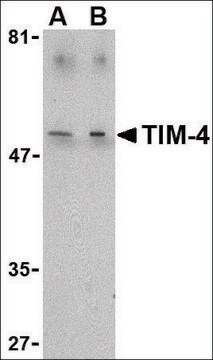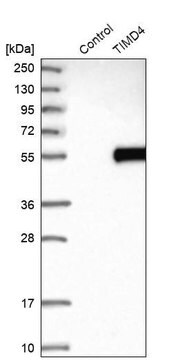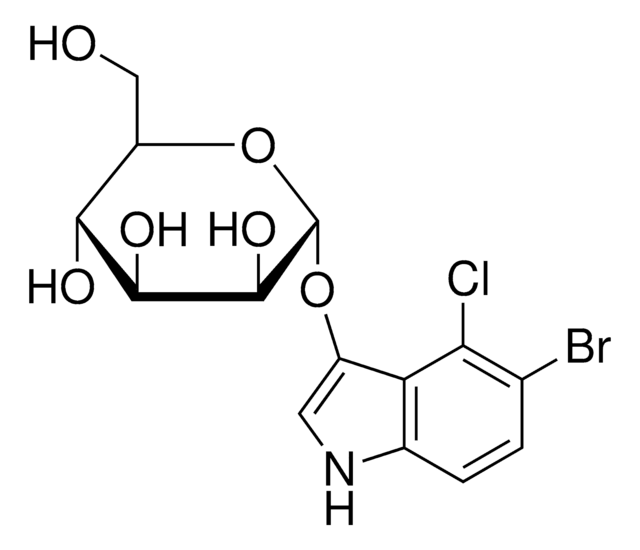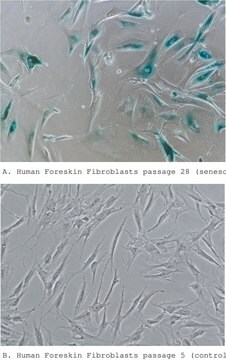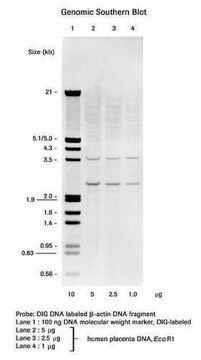MABC958
Anti-TIM4/TIMD-4 Antibody, clone Kat5-18
clone Kat5-18, from hamster(Armenian)
Sinonimo/i:
T-cell immunoglobulin and mucin domain-containing protein 4, TIMD-4, Spleen, mucin-containing, knockout of lymphotoxin protein, SMUCKLER, T-cell immunoglobulin mucin receptor 4, TIM-4, T-cell membrane protein 4, TIM4/TIMD-4
About This Item
Prodotti consigliati
Origine biologica
hamster (Armenian)
Livello qualitativo
Forma dell’anticorpo
purified immunoglobulin
Tipo di anticorpo
primary antibodies
Clone
Kat5-18, monoclonal
Reattività contro le specie
mouse
tecniche
flow cytometry: suitable
neutralization: suitable
Isotipo
IgG
N° accesso NCBI
N° accesso UniProt
Condizioni di spedizione
dry ice
modifica post-traduzionali bersaglio
unmodified
Informazioni sul gene
mouse ... Timd4(276891)
Descrizione generale
Immunogeno
Applicazioni
Flow Cytometry Analysis: Representative lots were conjugated with biotin and detected Tim4 immunoreactivity among mouse Mac1+ peritoneal cells (Miyanishi, M., et al. (2012). Int. Immunol. 24(9):551-559; Miyanishi, M., et al. (2007). Nature. 450(7168):435-439).
Neutralizing Analysis: A representative lot blocked Tim4-mediated engulfment of apoptotic CAD-/- thymocytes by murine peritoneal macrophages in a dose-dependent manner in culture (Miyanishi, M., et al. (2007). Nature. 450(7168):435-439).
Neutralizing Analysis: A representative lot, when administered via i.v. injection, significantly suppressed the phagocytosis activity of F40/80+ macrophages in the thymus of CAD-/- mice following intraperitoneal dexamethasone injection to induce apoptosis in the thymus (Miyanishi, M., et al. (2007). Nature. 450(7168):435-439).
Apoptosis & Cancer
Apoptosis - Additional
Qualità
Flow Cytometry Analysis: 0.1 µg of this antibody detected TIM4/TIMD-4 in Ba/F3-Tim4 cells overexpressing mouse Tim4.
Descrizione del bersaglio
Stato fisico
Stoccaggio e stabilità
Handling Recommendations: Upon receipt and prior to removing the cap, centrifuge the vial and gently mix the solution. Aliquot into microcentrifuge tubes and store at -20°C. Avoid repeated freeze/thaw cycles, which may damage IgG and affect product performance.
Altre note
Esclusione di responsabilità
Non trovi il prodotto giusto?
Prova il nostro Motore di ricerca dei prodotti.
Codice della classe di stoccaggio
12 - Non Combustible Liquids
Classe di pericolosità dell'acqua (WGK)
WGK 2
Punto d’infiammabilità (°F)
Not applicable
Punto d’infiammabilità (°C)
Not applicable
Certificati d'analisi (COA)
Cerca il Certificati d'analisi (COA) digitando il numero di lotto/batch corrispondente. I numeri di lotto o di batch sono stampati sull'etichetta dei prodotti dopo la parola ‘Lotto’ o ‘Batch’.
Possiedi già questo prodotto?
I documenti relativi ai prodotti acquistati recentemente sono disponibili nell’Archivio dei documenti.
Il team dei nostri ricercatori vanta grande esperienza in tutte le aree della ricerca quali Life Science, scienza dei materiali, sintesi chimica, cromatografia, discipline analitiche, ecc..
Contatta l'Assistenza Tecnica.